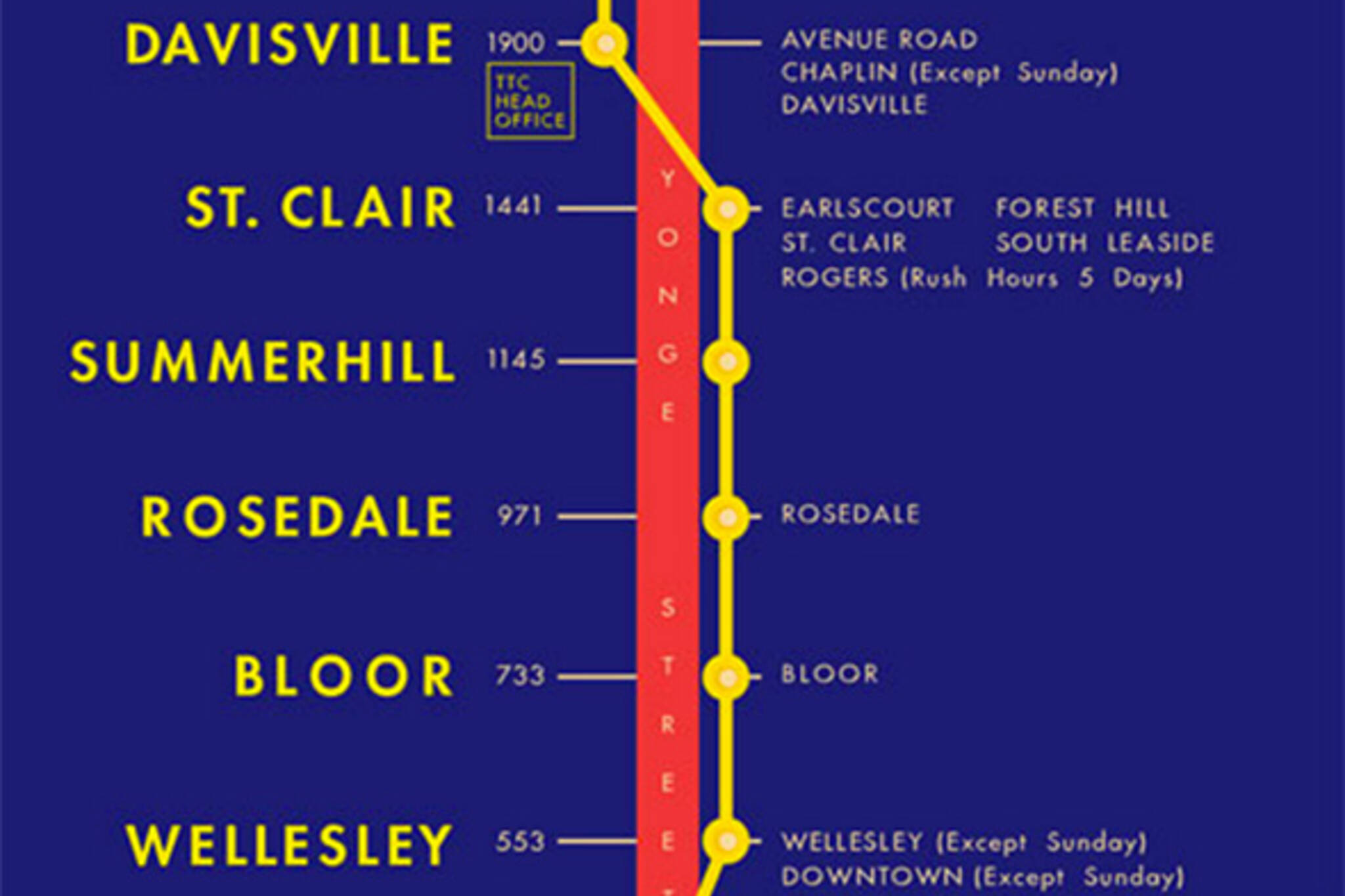
This is the actual route the subway takes in Toronto
In this instalment of "today I learned something quirky about the TTC," let's dwell a little on the actual route the subway takes in Toronto. Everyone's familiar with the disclaimer on the official route map that it's "not to scale," but the simplification of the subway's course likely leads many to believe it runs right underneath the streets it serves.
This is rarely the case.
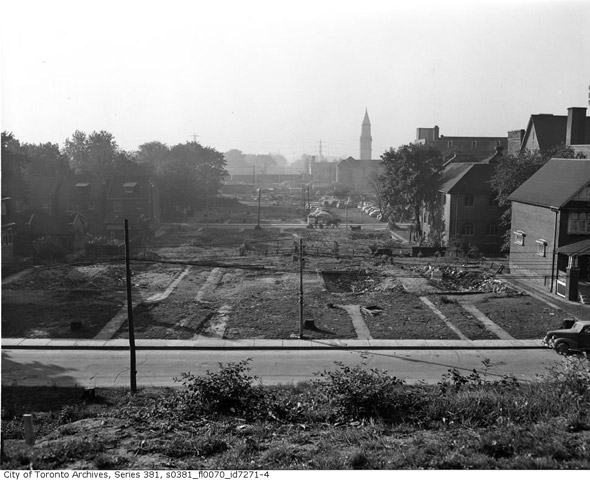
Why? The most simple answer is cost. When the first subway line was built in Toronto in the early 1950s, the TTC used the cut and cover construction method. This is cheaper than tunnel boring machines, but very disruptive to traffic. One way to save money and reduce gridlock during the building phase is to offset the route.
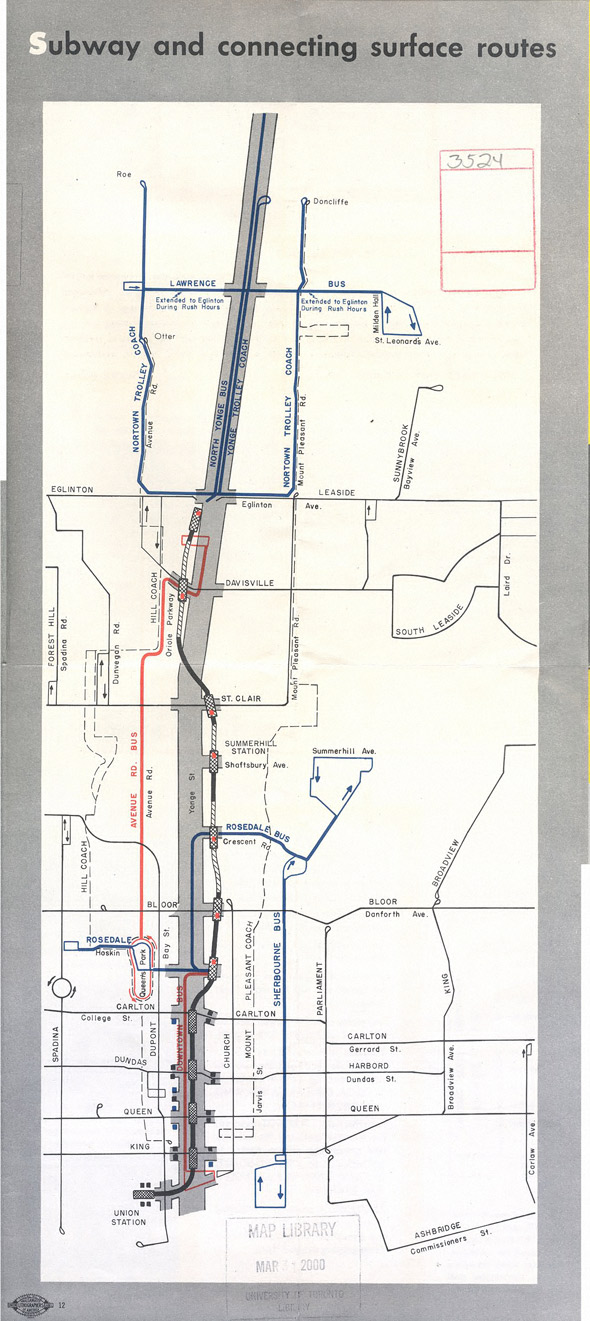
Only a short section of the original subway route -- the stretch between King and College stations -- runs directly under Yonge St. This is rather obvious as you have to walk 25 metres or so east to enter at Wellesley, Bloor, Rosedale, Summerhill, and St. Clair. It then crosses to the west side, and runs above ground for an extensive stretch through the Davisville Yards and beyond.
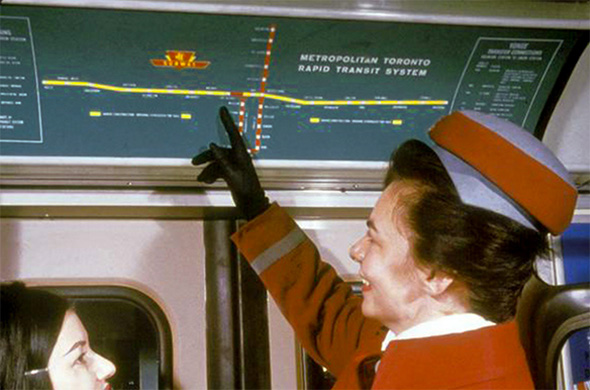
Perhaps surprisingly, when it came time to build the Bloor-Danforth Line, the TTC also adopted the cut and cover method (save for a few tunnelled sections). The vast majority of Line 2 runs just north of Bloor and Danforth, which necessitated the expropriation of roughly 800 properties. Once you pay attention, it's impossible to miss the network of laneways and parking lots that run above the line.
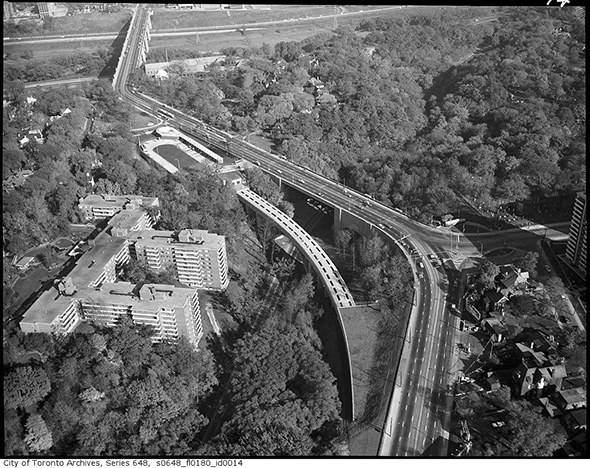
In fact, the one section of Bloor-Danforth where the subway does run directly under the street is across the Prince Edward Viaduct. Even then, after the subway leaves Castlefrank Station, it uses its own bridge to head towards Sherbourne because the TTC determined that the turn would be too tight if it followed the street's route.
Elsewhere across the line there are plenty of other examples in which the subway deviates from the streets under which it putatively runs. Even the Sheppard Line is slighty offset to the south despite the use of boring machines for most of the tunnels. Major sections of the currently under construction Crosstown LRT will, however, run directly under the street.
In this sense, it will be like the much of the downtown loop of Line 1, which based on the density of the city at the time, had to be built right underneath the street.
Photos via the TTC and the Toronto Archives.
Latest Videos
Latest Videos
Join the conversation Load comments







